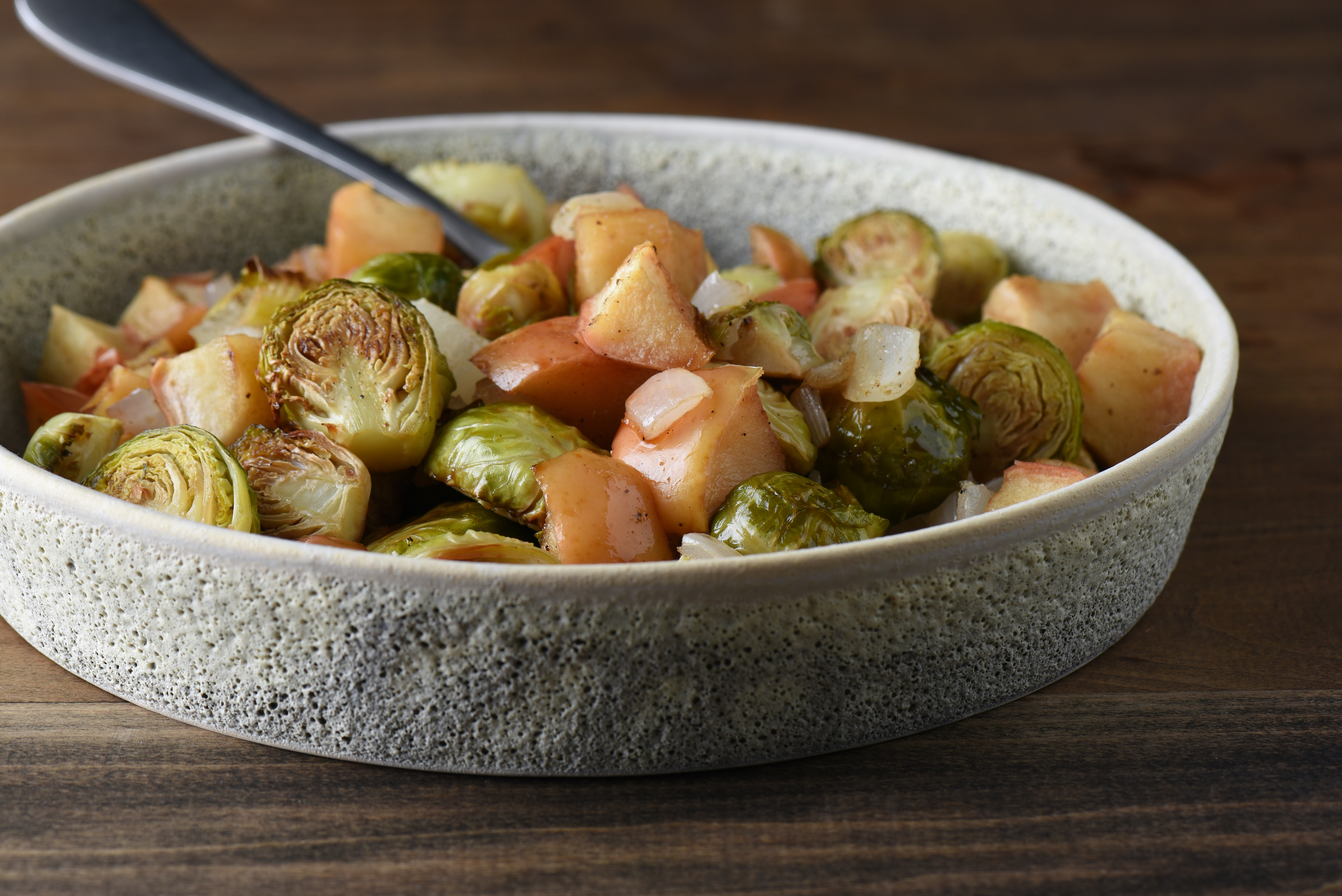Help Prevent Diabetes with Michigan Apples
Everyone knows a family member or friend whose life has been affected by diabetes and it’s no surprise since millions of people worldwide are diagnosed with this disease. Many individuals have prediabetes. This is where blood sugar levels are elevated but not high enough to be diagnosed as diabetes. According to the Centers for Disease Control, almost 38% of U.S. adults aged 18 years or older and nearly half (48.8%) of adults aged 65 years or older have prediabetes and most of these people may not even know they have it. Prediabetes puts you at increased risk of developing type 2 diabetes, heart disease, and stroke, making those at risk wonder how they can prevent diabetes and prediabetes.
Fortunately, progressing from prediabetes to diabetes isn’t always inevitable, and key lifestyle changes may significantly reduce your risk, and prevent diabetes.

5 Steps You Can Take to Help Prevent Diabetes:
1. Manage your weight.
Large body weight fluctuations are associated with several health issues including diabetes. Check with your doctor to determine if you are healthy at your current weight and include plenty of exercise consistently no matter your size. If you and your doctor are concerned your weight may be too high, losing even a small amount may help reduce your risk for diabetes if the weight loss is sustainable.
One important component of any meal plan is the inclusion of more low-calorie, nutrient-rich fruits and vegetables. Michigan Apples for example are a rich source of vitamins, minerals, fiber, and phytochemicals all in a portable and filling 90-calorie package. Enjoy one for an easy snack or as part of a healthy meal.
If you need help with weight management, visit a Registered Dietitian who can help you create a plan specific to your needs.
2. Be physically active.
Physical activity has been shown to reduce insulin resistance and blood sugar in prediabetic adults.
Think about physical activity in two ways: First, look at ways that you can simply move more throughout your day – Walk the dog, park farther out when running errands, and take the stairs when available – it all adds up! Another way to increase physical activity is by scheduling activity time. This may be a walking club with neighbors, fitness classes at the YMCA, or exercising via a YouTube video.
Whatever you choose, it’s best to pick activities that you enjoy, can engage in regularly, and feel you can stick with long-term. The current recommendation of 2-1/2 hours a week of moderate aerobic activity, or 30 minutes 5 days a week, can help prevent diabetes. Most importantly, don’t give up! If you fall back one week, just get back to it the next.
3. Think about what you drink.
Sticking with water most of the time helps you avoid high-caloric beverages that are high in sugar.
Unsweetened coffee and tea may also provide some benefits. Studies have reported that drinking coffee daily reduces the risk of type 2 diabetes. In addition, coffee and tea have antioxidants known as polyphenols may help protect against diabetes. Green tea specifically contains a unique antioxidant compound called epigallocatechin gallate (EGCG) that has been shown to reduce blood sugar release from the liver and increase insulin sensitivity.
4. Consume more fiber.
Most people do not consume the recommended amount of fiber which is approximately 25 grams per day.
Fiber is beneficial for gut health, diabetes, and weight management. One Michigan Apple has about 4.5 grams of fiber which helps promote fullness and slows down digestion and thus the rise in blood sugar. Studies have shown that adequate fiber helps keep blood sugar and insulin levels low. The soluble fiber in apples also helps lower cholesterol.
5. Eat more Michigan Apples!
Apples have been demonstrated to lower the risk of type 2 diabetes and here’s why:
- Apples have a minimal effect on blood sugar levels and are unlikely to cause rapid spikes in blood sugar, even in diabetics.
- The polyphenols in apples, which are found primarily in apple skin, may improve insulin sensitivity and reduce insulin resistance.
- The antioxidants in Michigan Apples may help reduce your risk of diabetes and help keep your blood sugar level stable. One of those antioxidants is quercetin which slows carbohydrate digestion, helping to prevent blood sugar spikes.
- As mentioned above fiber in apples helps stabilize blood sugar levels, in addition to providing other health benefits.
Delicious Ways to Add More Apples to Your Diabetes-Friendly Meal Plan:
- Dice apples on top of your morning oatmeal
- Baked shredded apples or unsweetened applesauce into whole-grain muffins
- Use fresh apples in smoothies like an Apple and Almond Green Smoothie
- Choose a fresh apple as a snack paired with low-fat cheese or nut butter
- Add diced apples to coleslaw or a green salad
- Add apple slices to a turkey or peanut butter sandwich
- Roast apple chunks with brussels sprouts for a delicious side dish
- Dice apples in your favorite fall stuffing recipe
- Add diced or grated apples to turkey burgers
- Use dried or dehydrated apples with whole grain cereal and nuts in a trail mix
- Top pork tenderloin or chicken breasts with sautéed apples
Michigan Apples is a Partner in Helping You Prevent Diabetes
Getting diabetes is not inevitable, even if it runs in your family. If you have prediabetes, use it as a motivator for making changes that can help reduce your risk of developing type 2 diabetes.
Eating the right foods, like Michigan Apples, and adopting other lifestyle behaviors that promote healthy blood sugar and insulin levels will give you the best chance at avoiding diabetes.
For more healthy meal plan ideas, check out our complete one-week menu following a healthy eating pattern.




